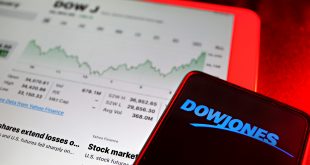Financial Markets’ Weekly Recap, June 27 – July 1
Last week, financial markets sent several warnings that global economic growth slowdown is looming and recession has become most probable, however there is no general agreement among market participants on ‘when’ entering into recession could take place.
Gold
As trading kicks off for the month of July and the second half of the year, investors are hoping for a third quarter gold’s rebound. The yellow metal is essentially flat for the year. It may not be cause for celebration, but gold holders have at least obtained some shelter from broader market volatility.
The G7 leaders agreed on Tuesday to ban Russian gold imports in the latest round of sanctions over Russian President Vladimir Putin’s invasion of Ukraine. The US said Russia had used gold to prop up its currency as a way to circumvent the impact of sanctions. US Treasury announced a ban on Russian gold imports, as part of a move aimed at putting more pressure on Moscow.
Gold price could disrupt the critical obstacle of $1,810.00 and may establish above the same as the US dollar index entered into a corrective mode. On Friday, the precious metal displayed a responsive buying action after printing a fresh five-month low at $1,784.57. Usually, a responsive buying action in the asset indicates that the asset has become a value bet now. Correction of the Dollar Index on Friday resulted in a firmer recovery of gold price.
Cryptocurrencies
The cryptocurrency market continues to feel prevalent pessimism. If market conditions persist, the summer of 2022 will yield a fruitless crop. Bitcoin price signals scary times. Bitcoin price trades at $19,350 at the time of writing.
The bears showed up towards the final days of June with enough strength to produce a monthly close below the psychological $20,000 level at $19,942. The monthly close is now the second-largest bearish candlestick since May 2021. This unfortunate piece of evidence bears the necessity to consider lower targets for the Bitcoin price in the coming months. $18,750 and $17,300 will be key levels to keep an eye on.
Invalidation of the bearish downtrend relies upon a breach above $23,500. If the bulls can hurdle the mid $23,000 barrier, they may be able to reconquer the trend and rally toward $31,000, resulting in a 60% increase from the current Bitcoin price.
Monetary Policies – Central Banks
On Thursday, June 30, the US dollar closed higher on the hawkish stance embraced and openly expressed by Fed’s Jerome Powell, on the contrary, the Euro fell on ECB’s Christine Lagarde’s comments during the European Central Bank’s Forum in Portugal. It seems that the era of ultra low inflation that preceded the pandemic “is unlikely to return” and central banks need to adjust to significantly higher price growth expectations”, according to Lagarde.
The Bank of England Governor Andrew Bailey looked cautious and noted that there were clear signs that the economy is slowing. “We are being hit by a very large real income shock,” Bailey noted.
Forex
The US dollar witnesses higher demand at the start of the new month (July), the beginning of the third quarter and the onset of 2022’s second half. Higher demand is a strong signal for the dollar’s safe-haven status, meanwhile a number of major rival currencies are dragged to the downside. The Euro fell to the 1.0365 low versus the US dollar. The Euro was retreating, along the week, from a high close to the 1.05 area and the Australian dollar sank to fresh cycle bear lows at 0.6763. Tighter monetary expectations, to encounter hot inflation, do benefit the dollar so far.
As a consequence, investors are fleeing to safety. As a reaction to this development, the US 10-year yield dropped 6.8 basis points to 2.91% as traders await the outcome of this week’s FOMC Minutes for June meeting, when it raised interest rates by 75 basis points. This was the most in almost three decades, amid concern that further projected rate hikes in the Fed pipeline are likely to tip the economy into a recession.
Crude Oil
On Friday, West Texas general contracts closed 2.5%, or the equivalent of $2.67 a barrel, and made prices higher by 0.7%.
WTI crude oil remained in red territory on Friday, pressured by growing fears of recession that continues to impact market sentiment, while comments from OPEC that the group is not going to increase more its production and will stick to its planned output increases, although being expected, added to the prevalent negative tone. The action on Friday, following 5.3% drop in past two days, is pressuring pivotal support at $104.66.
Equities
European markets closed mixed Friday after suffering their worst quarter since the onset of the Covid-19 pandemic, as inflation and interest rate hikes continue to weigh on sentiment.
The pan-European Stoxx 600 index closed flat, having earlier posted gains of 1% in early deals. Tech stocks fell 2% to lead losses while utilities gained 3%. Dutch chipmaker ASMI was the worst performer during Friday deals, shedding 9% to lead a broad decline for semiconductor stocks.
US equities were higher in the first session of the third quarter, recouping some of the ground lost in Thursday’s session finished up the worst first half since 1970. The Dow Jones Industrial Average added 1.1% to 31,097.26, the S&P 500 was also up by 1.1% to 3,825.33, and the Nasdaq Composite was around 1% higher at 11,127.85. For the week, the Dow was 1.3% lower, the S&P 500 dropped 2.2%, and the Nasdaq fell 4%.
Economic Data
The Fed’s preferred core Personal Consumption Expenditures index came in this week at 4.7%. That represents a decrease for the third consecutive month, although the annual rate remains well above the Fed’s 2% target.
On the economic data front, the Institute for Supply Management’s US manufacturing index fell to 53 from 56.1 in May, compared with expectations of 54.5. This was the weakest since June 2020, when the world was in the throes of the COVID-19 pandemic.
The core rate also excludes food and energy costs. Factoring those critical costs of living back in puts the PCE at 6.3%.
For the week ahead, Nonfarm Payrolls will be key and the data is expected to show that Employment likely continued to advance firmly in June but at a more moderate pace after three consecutive job gains of around 400k in March-May, the analysts at TD Securities said. ”High-frequency data, including Homebase, still point to above-trend job creation. Markets also look for the UE rate to stay unchanged at 3.6% for a fourth straight month, and for wage growth to remain steady at 0.3% MoM (5.0% YoY).
 Noor Trends News, Technical Analysis, Educational Tools and Recommendations
Noor Trends News, Technical Analysis, Educational Tools and Recommendations





